Bentham Golf Club - The Augusta of the Dales
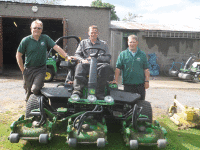
Not many clubs can claim to have had their clubhouse moved to aid the war effort, but that is what happened at Bentham Golf Club during the second world war!
The club, formed in 1925 as a nine-hole, had built a wooden clubhouse, complete with elegant veranda and changing rooms, and purchased two fields they had previously been renting. These were immediately commandeered by the Government to aid the war effort, ploughed up and planted with much needed vegetable crops. The clubhouse itself was moved further on to the course and doubled as an observer post for aircraft recognition. Rumour has it that a club member who served in the Royal Observer Corps spent most of his duty time practising his chipping and putting on the 8th green whilst keeping an eye out for passing aircraft.

By the early seventies, the wooden clubhouse had "passed its sell by date" and was deemed to be inadequate to cope with the growing number of members. Other factors, such as the highway authority's plans for a relief road through the middle of the dance floor, helped to make the decision for a new building an easy one! A new site was found and the new clubhouse was opened for business in the spring of 1975.
It soon became clear that, whilst the new clubhouse was attracting more members and they had a strong junior section, the club's nine-hole layout was under pressure from increased footfall whilst, additionally, some members were moving away to join eighteen hole clubs for a better golfing experience.
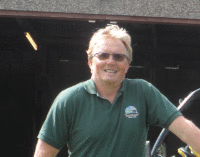
"From a young age I wanted to be a professional golfer. Watching Seve at Royal Birkdale in 1976 instilled my passion for the game. Ultimately, I never quite got 'good enough' so, as many good golfers do, I chose the greenkeeping route."
"I became a junior member at Bentham in 1976 and began work on the YTS scheme in 1982, before going to Myerscough College, firstly to undertake the National Certificate in Horticulture - I love all aspects of plants - followed by the National Diploma in Sports Turf. Whilst working at Longridge Golf Club in Preston, I was approached by some of the Bentham committee members to return and oversee the extension of the course to eighteen holes. This was in 1992."
Bentham Golf Club is situated in the Three Peaks area of North Yorkshire which is famous for its wonderful scenery and stunning views. The course has been described as the 'Augusta of The Dales' because it looks so attractive. The signature hole is the 7th, a par 3, where you look down from an elevated tee to an inviting green which lies tantalisingly on the other side of a pond.
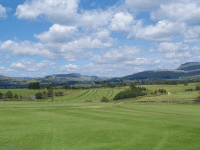
Alan continues; "In 2000, the club eventually undertook the task of extending the course to eighteen holes. Finance was sought and, for around £250,000, ten new greens, various tees, bunkers and water features were constructed. Due to poor weather, the construction moved into a second year and it was finally completed and opened in October 2001."
"The three full-time staff were initially helped by the addition of two seasonal staff. Membership numbers increased to above 500, so things were quite settled. The contractors were brought back in to do some drainage works and snagging list."
"The club took on a golf professional and spent a great deal on the clubhouse. But, gradually, as the noughties moved on, membership began to fall and, to counteract this, fees went up, so more members left! Greenkeeping staff reverted back to the three full-time crew who managed the old nine holes."

"I have two members of staff to help me. Rob Coates is my deputy, who has been with me for fourteen years, and an apprentice greenkeeper, nineteen year old Connor Hall, who has been here for two years and is currently taking NVQ Level 3 at Myerscough College. His work is split between the caravan park and the golf course, but he should, eventually, be placed permanently at the course to work on all greenkeeping aspects. Personally, I think all golf clubs should have apprentices as I have found this the best method of recruiting and training staff."
"We can also pull in additional staff from the caravan park, as required," Alan confirms.
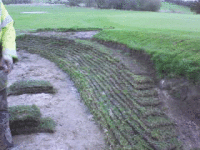
"Since the course was extended, we have been renovating all thirty-five bunkers as they were originally very poorly constructed. We dig out the existing bunker, put in a drainage system, gravel raft and a liner. Due to the exposed nature of the site, we have revetted many of the bunkers which helps the maintenance of the sand. This is ongoing. We still have ten to rebuild!"
"A number of the tees need their surfaces relevelling. Some of the recently built tees were badly constructed with very poor surfaces. Hopefully, we can begin a renovation programme on these tees as time allows."
"We've also built a new fifteenth hole. The work began in 2012 and opened this spring. Only the green was built to any specification, so the surrounds and fairway will need drainage improvements in the coming years. Due to the nature of the soil, heavy machinery can't carry out work in the winter, so it has to be done in summer. Winter weather patterns have been wetter in recent years too, so that certainly hasn't helped our cause either," bemoans Alan.
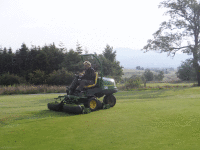
Alan explains that the underlying soil is generally a thin clay loam over a heavy clay subsoil. "We have five push up greens from the original nine hole course; the remaining thirteen are varying sand based greens. The tees are mostly a soil based construction."
"Mainly due to the equipment and lack of staff, we carry out traditional methods, coring in spring and autumn and adding heavy topdressing. We also have two Imants Shockwaves, the smaller of these we use in the autumn/winter which, when carried out in good ground conditions, improves drainage on the clay based push up greens to enable winter play without temporary greens. Through the season, we use the Thatchaway units weekly and, if time allows, lightly topdress occasionally - we still use shovels so, sadly, don't carry out the task enough."
"We have an ageing irrigation system with many electrical problems but, as we are in the northwest of England, it is just about adequate for the amount it gets used."
"Flooding is the course's major downfall, and high winds cause issues with certain greens drying out quickly. In the mid nineties, I instigated a drainage programme where the club allocated sufficient funds to drain a fairway each year. In 1994, we drained the 3rd fairway which was completed in a day by contractors; since then no funding has been set aside for drainage programmes!"

"Where general maintenance is concerned; on the greens, we use a wetting agent programme which certainly helps prevent dry patch issues and means irrigation usage is lessened."
"Through the season, the greens are the only areas that have regular maintenance regimes. They are mown daily at 3.75mm, verticut weekly (if staffing allows) lightly topdressed monthly (if time allows), and given a liquid feed every three weeks with Headland Seamac Proturf, liquid turf hardener and Primo Maxx to keep them ticking over. We star tine each month, or prior to wetting agent application, at 4" depth."
"The tees and surrounds are mown throughout the season at 12mm, and fairways are kept between 14mm-18mm dependent on growth patterns and staffing levels."
"Myself and Rob do all the agronomic tasks as we are the only 'greenkeepers' at the course. When coring and/or topdressing takes place, staff from the caravan park come to assist."
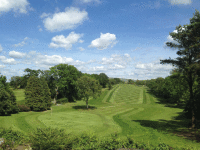
"We spray, when necessary, for leatherjackets, worms in March and November, weeds in April and May and again in July and August," Alan explains. "Fusarium and Anthracnose are the main disease issues on the greens, but in recent years, probably due to better cultural practices, they haven't been as significant."
"Our biggest problem is rabbits; they are a major issue at present. We try to control them with some shooting, but there's not much else we can do."
Alan maintains that the most important part of the golf course is the environment that it sits in and the wide ranging habitats the course provides. "Many golf clubs need to understand the importance of these habitats and the flora and fauna found, before messing with them," he expounds.

"Many members at golf clubs don't understand or aren't interested in the amount of effort that goes into producing the surfaces they get to play on. And, whilst a lot has been achieved through various organisations, and many clubs treat their greens staff with the respect they deserve, you will still get the element who just see us as grass cutters. I believe every club needs to do more to raise our profile."
It doesn't take much reading between the lines to realise that Alan suffers huge frustrations in his work. Staffing levels are inadequate and decisions appear to be made without his input. Yet, to his and his small team's eternal credit, the course is presented to the highest possible standard they can achieve.
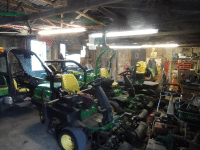
John Deere 2500a greens mower
John Deere 2500b greens mower
John Deere 2653b tees and surrounds mower
John Deere 8700 fairway mower
John Deere 8800 rough mower
John Deere 4300 tractor
Ransomes 160d
John Deere Aercore 1500
Imants Shockwave 1500
Imants Shockwave 2000
John Deere Gator
John Deere 1145 outfront mower
Various pedestrian machines
Machinery is purchased on a five-year rolling plan through local dealer, Balmers GM in Burnley.
Alan comments; "I set a budget for course maintenance to use for the season. But, as we are now a family owned business, I frequently discuss the needs of the course with the owners and club manager."
"We have a service contract on our fleet of John Deere machines through Balmers, but we carry out general day to day maintenance ourselves."
"We have used John Deere for nearly twenty years. They are reliable and simple to maintain. I'm sure we buy them now because green is the favourite colour of the owner!"
